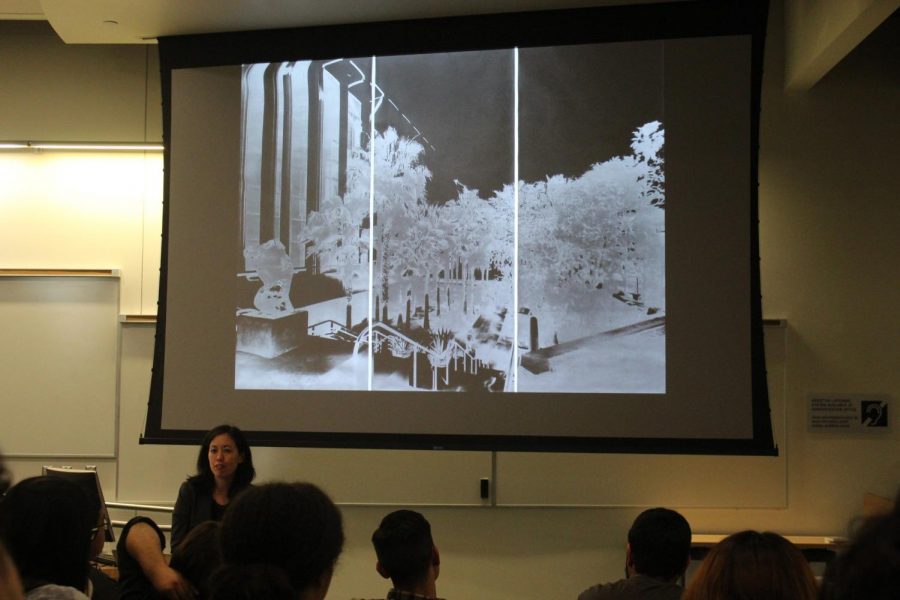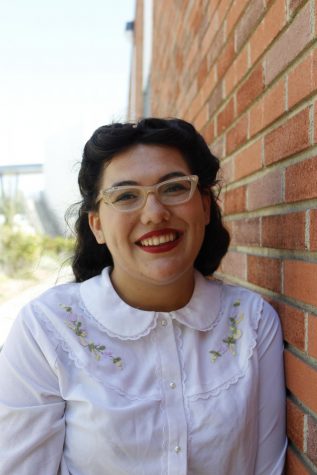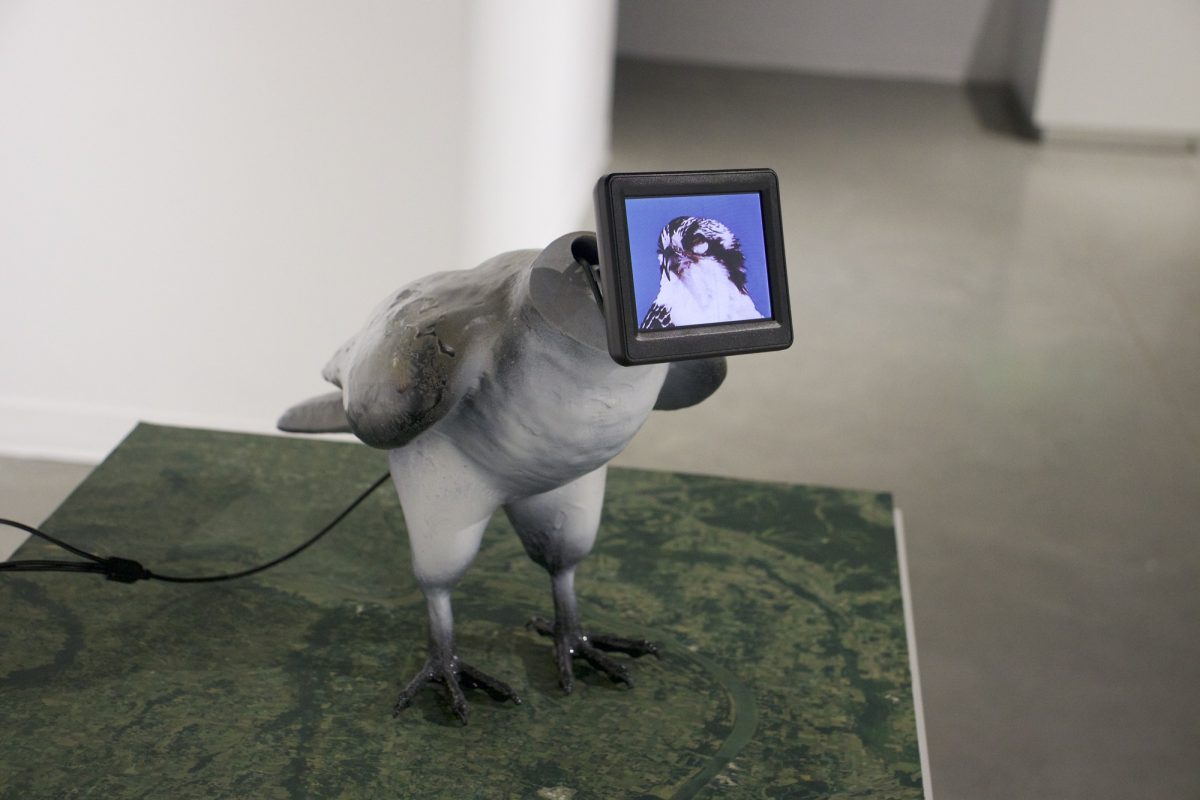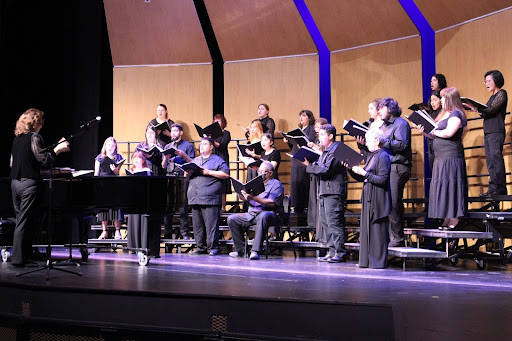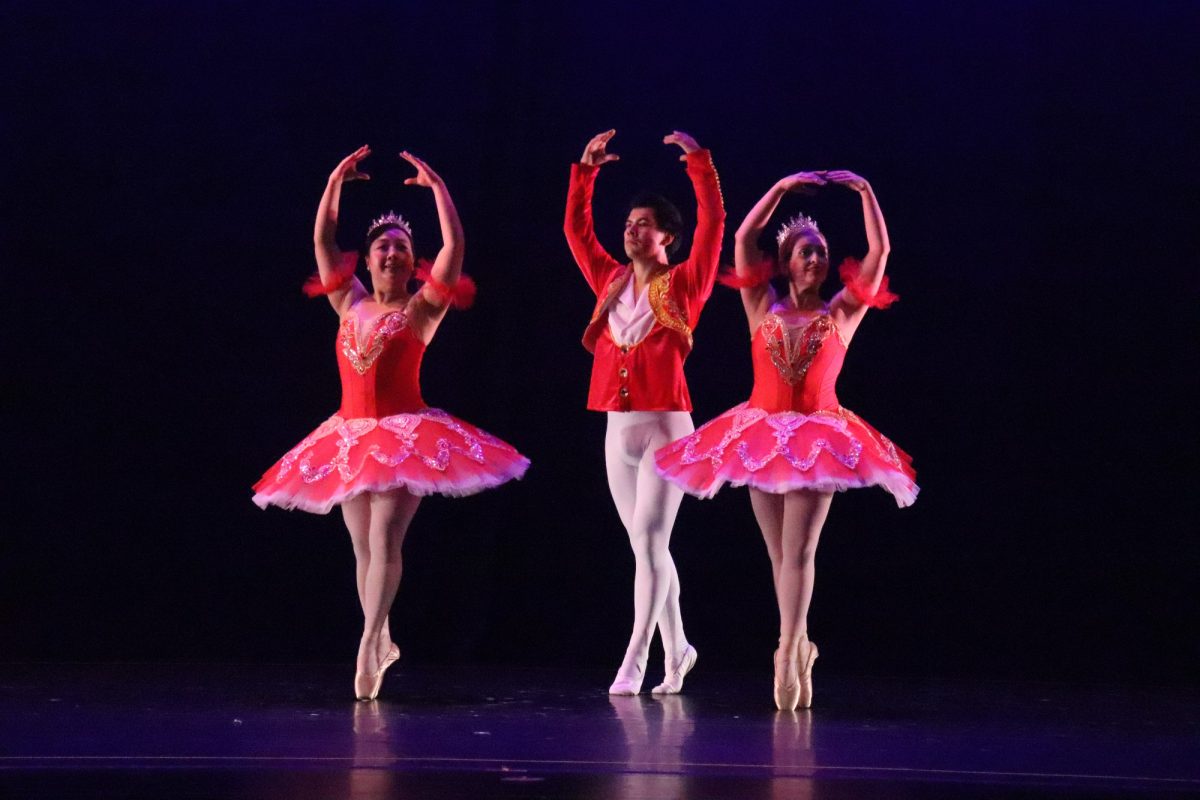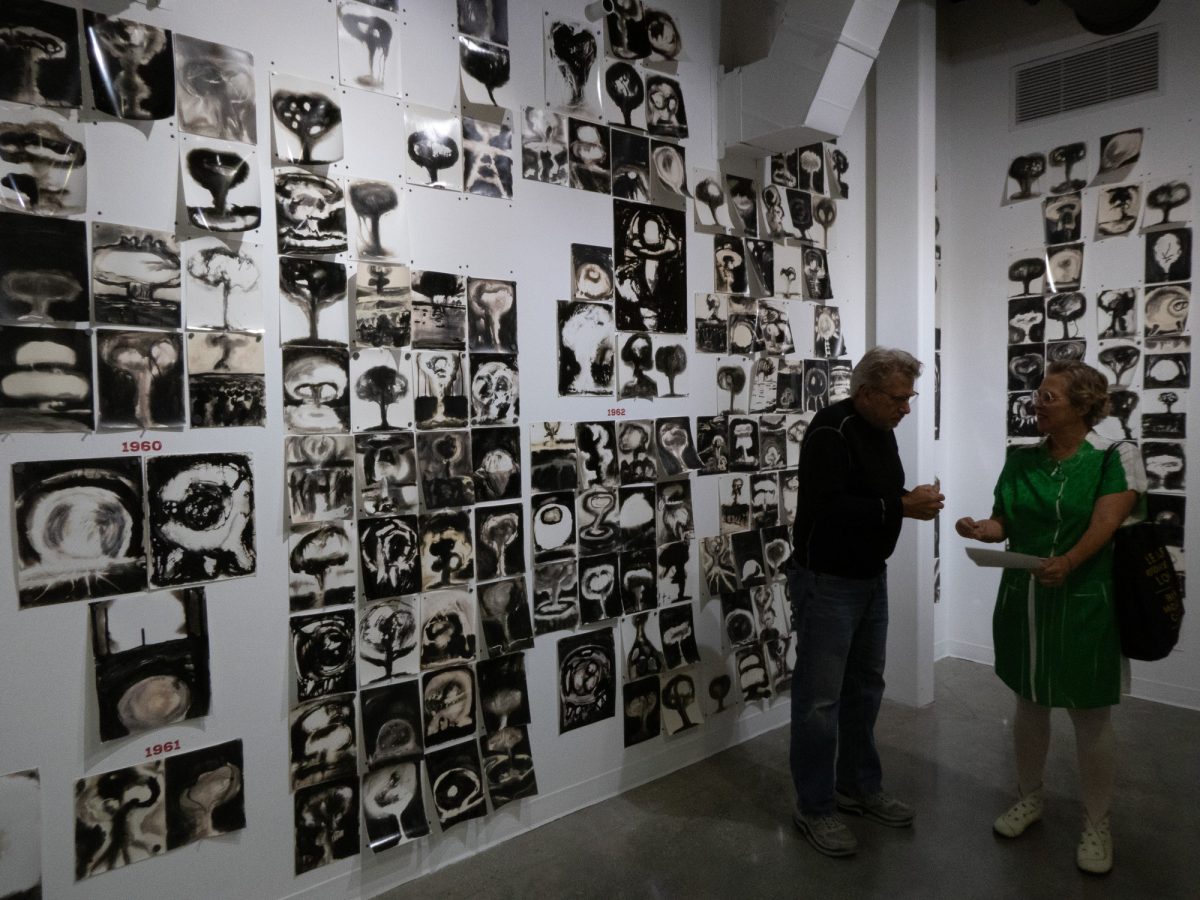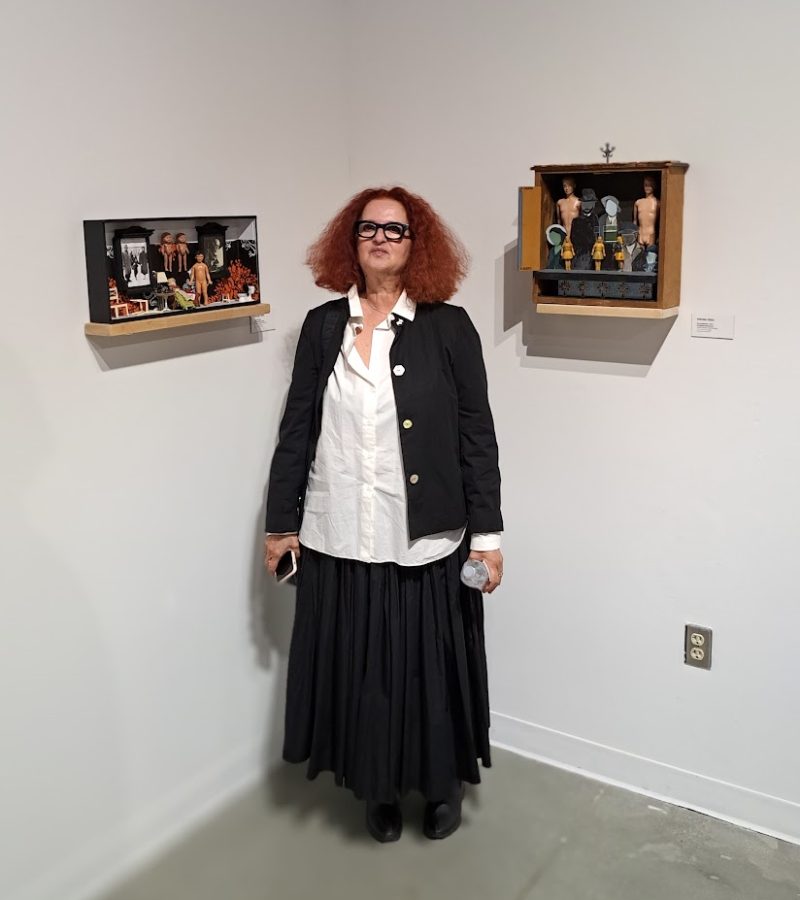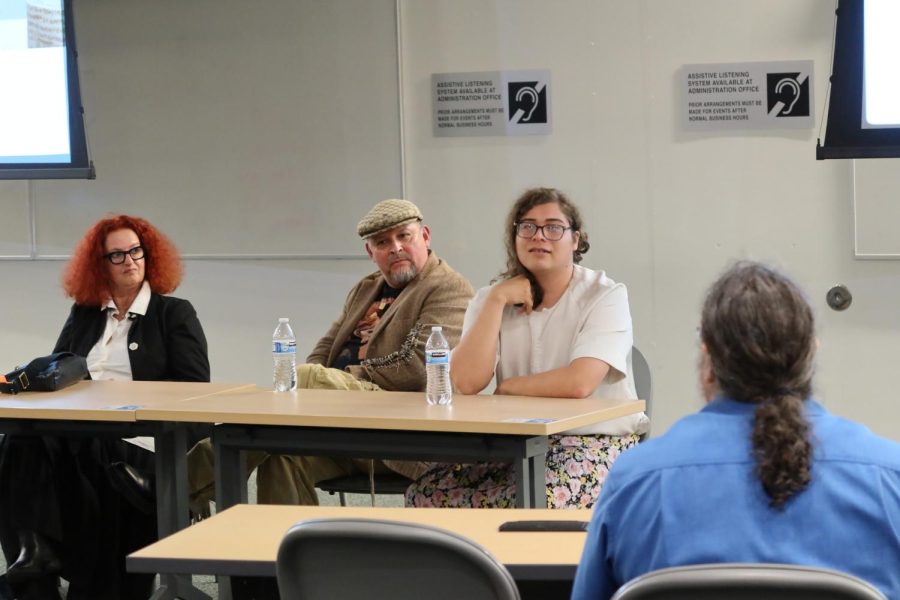Students learned about photographer Vera Lutter and her documentation of the Los Angeles County Museum of Art, during the “Museum Pictures: Vera Lutter” lecture, given by associate curator of contemporary projects Jennifer King on Oct. 23.
The photos taken by Lutter document the current state of the museum before it is to be demolished and remodeled.
The event was coordinated by art history professor Lisa Vitela as the initial lecture for a lecture series to circulate around the topic of art, artists and art history.
Vitela hopes to have four lectures this year as part of the series, and will host a second lecture next week with UC Irvine professor Bridget Cooks.
Vitela said, “This year we are starting off our lecture series with Jennifer King’s lecture because I thought it was a great way to connect across the disciplines in our art and design department because we have a photography program, an art history program and we have lots of different fields where I think this could be relevant.”
King started the lecture by giving a brief background of LACMA, when it was first built in 1965, when another structural addition was built in the 1980s and the eminent demolition and reconstruction of the museum.
King used this information as a segway to discuss Lutter’s two-year residency at LACMA to “document and commemorate” the museum in its current state.
She said, “It’s an artist residency that I have been involved with for about two years now about a German born, New York based artist who has been coming to LACMA periodically over the course of two years to photograph our building and collections.”
Lutter, a German-born photographer who is currently based in New York, uses a camera obscura to capture images.
A brief history lesson about the camera obscura was provided by King.
King then explained the process of constructing and transporting the camera obscura, devising a wet lab within the museum’s interior and setting up shots to accommodate the capture and development of Lutter’s photographs.
Slides of Lutter’s work throughout her years of living in America were displayed throughout the portion of the lecture where King introduced Lutter’s work and explained the process in which it takes to a capture an image with a camera obscura.
King also discussed that exposure time of Lutter’s photographs of LACMA, ranged from several hours to several months, depending on the size of the art or room to be photographed.
This long exposure time, King explained, was due to the small hole made into the wooden box that served as Lutter’s camera.
Vitela explained as to how the lecture topic was chosen: “So for this one [lecture] I know Jennifer as a colleague and as a friend and she was telling me about this exhibit and I was very excited about a one woman exhibit at LACMA because I thought it was so relevant for this course [History of Women in Visual Arts].
“She’s [King] receiving so much support from the director at LACMA, just to see that kind of institutional support for a project directed by a woman artist was really exciting to me and I thought it would be relevant to the students in my class,” Vitela stated, “and to other classes as well so that’s why we got a great turn-out, I think this was our first sold-out lecture because I don’t think there was a free seat in the house.”
The partition that divides Fine Arts lecture room 133 and 134 was lifted to create a lecture hall atmosphere as both rooms were packed by students, either attending for a class or who just happened to walk in.
Biology major and lecture attendee Aaron Felax said, “It’s pretty interesting to hear what they’re [LACMA] doing, I actually had no idea that they were doing the remodeling and everything and that they were just gonna break down all those buildings, but it’s interesting to learn about, even though I’m not particularly interested in it.”
King said, “I hope that they [the audience] just have a little bit of insight into the way that museums sometimes work with contemporary artists. I think that people don’t always know how museums operate and I hope that I have least given some insight into the behind-the-scenes operations of how museums works collaboratively with living artists.”
Vitela said, “The purpose or goal [of the lecture] was just to alert students that this is an exhibition that’s coming up in 2020, to keep an eye for it, but also just to get a sense of how an artist creates her work, how an exhibition comes together.
“I thought it was very informative for students to see that process at the museum and because this artist was in residence at LACMA, she was creating her art there and then the art is going to be displayed there as well so it’s just an interesting exhibit in the sense that you can track it from start to finish.”
An exhibit consisting of Lutter’s photographs taken of the soon-to-be demolished museum, its galleries and art that it once contained will be on display in 2020.


